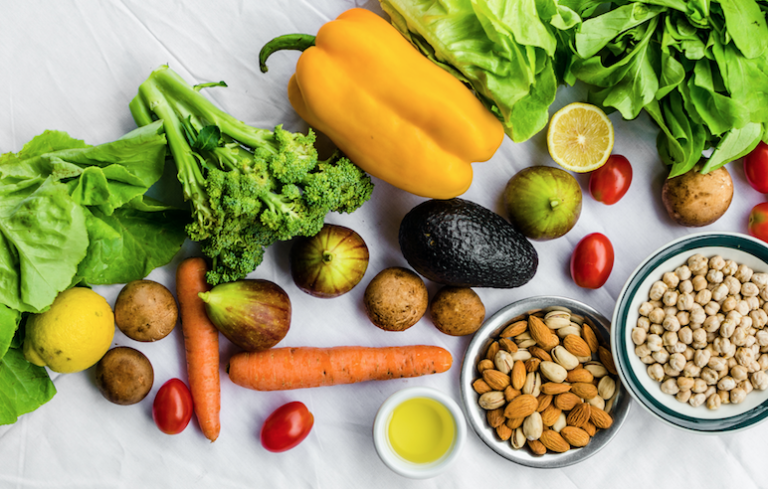Healthier Food Swaps: A Practical Guide to Nutritious Eating
In today's fast-paced world, the pursuit of a healthier lifestyle is more relevant than ever. The food we consume directly impacts our overall well-being, influencing everything from our energy levels to our risk of chronic diseases. However, making significant changes to our diet can often seem daunting, especially when we are used to certain foods and flavours. This is where the concept of healthier food swaps comes into play—small, manageable changes in our food choices that can lead to substantial health benefits over time. By replacing less nutritious options with healthier alternatives, we can make a positive impact on our health without sacrificing taste or satisfaction.
Understanding Healthier Food Swaps
Healthier food swaps involve substituting ingredients or foods that are high in unhealthy fats, sugars, or calories with more nutritious options that provide essential nutrients, vitamins, and minerals. The goal is not to completely overhaul your diet overnight but to gradually introduce these swaps into your daily routine. Over time, these small changes can lead to improved health outcomes, weight management, and a reduced risk of developing chronic conditions such as heart disease, diabetes, and obesity.
The Importance of Whole Foods
Before diving into specific food swaps, it's essential to understand the value of whole foods. Whole foods are minimally processed and are as close to their natural state as possible. They include fruits, vegetables, whole grains, nuts, seeds, and lean proteins. These foods are rich in nutrients and fibre, which are vital for maintaining good health. By focusing on incorporating more whole foods into your diet, you're already making a significant step towards better health.
Healthier Breakfast Swaps
Breakfast is often considered the most important meal of the day, providing the necessary fuel to kickstart your morning. However, many traditional breakfast options are loaded with sugars and unhealthy fats. Here are some healthier breakfast swaps:
- Swap Sugary Cereals for Porridge
Sugary cereals are often high in refined sugars and low in fibre, leading to energy crashes later in the day. Instead, opt for porridge made from whole oats. Oats are a great source of soluble fibre, which helps to keep you full for longer and can aid in lowering cholesterol levels. Add fresh fruits like berries, nuts, and a drizzle of honey to enhance the flavour without the need for added sugar. - Swap White Toast for Wholegrain Bread
White bread is made from refined flour, which lacks the essential nutrients and fibre found in whole grains. Wholegrain bread, on the other hand, retains these nutrients and provides a slower release of energy. This helps to keep blood sugar levels stable and reduces the likelihood of overeating later in the day. - Swap Fruit Juice for Whole Fruits
While fruit juice may seem like a healthy option, it often contains a high amount of sugar and lacks the fibre found in whole fruits. Eating whole fruits instead provides you with the same vitamins and minerals but with the added benefit of fibre, which aids digestion and helps you feel full.
Smarter Snacking
Snacks can be a significant source of hidden sugars, unhealthy fats, and empty calories. Making smarter choices when it comes to snacks can help you avoid unnecessary weight gain and maintain steady energy levels throughout the day. Consider these swaps:
- Swap Crisps for Air-Popped Popcorn
Crisps are typically high in unhealthy fats and sodium, which can contribute to high blood pressure and weight gain. Air-popped popcorn, on the other hand, is low in calories and can be a good source of fibre. Avoid adding butter and instead season with herbs, spices, or a sprinkle of nutritional yeast for a savoury flavour. - Swap Chocolate Bars for Dark Chocolate
Milk chocolate bars are often loaded with sugar and unhealthy fats, which can lead to a quick spike in blood sugar levels followed by a crash. Dark chocolate, particularly those with a cocoa content of 70% or higher, contains less sugar and is rich in antioxidants that are beneficial for heart health. A small square of dark chocolate can satisfy your sweet tooth without the excessive sugar intake. - Swap Biscuits for Nuts and Seeds
Biscuits are typically high in refined sugars, unhealthy fats, and lack any significant nutritional value. A healthier alternative is a small handful of unsalted nuts and seeds. These are rich in healthy fats, protein, and essential nutrients like magnesium and vitamin E. They also provide a satisfying crunch and can help keep hunger at bay between meals.
Healthier Lunch and Dinner Options
Lunch and dinner are opportunities to incorporate a variety of nutrients into your diet, but they can also be meals where unhealthy choices are often made. By making some thoughtful swaps, you can enjoy your meals while still keeping them nutritious.
- Swap White Rice for Brown Rice or Quinoa
White rice is a refined grain that has been stripped of its fibre and nutrients. Brown rice, on the other hand, retains the bran and germ, making it a whole grain that is rich in fibre and B vitamins. Quinoa is another excellent alternative, offering a complete protein source and a good dose of fibre, magnesium, and iron. - Swap Creamy Sauces for Tomato-Based Sauces
Creamy sauces, often made with butter, cream, and cheese, are high in saturated fats and calories. Swapping these for tomato-based sauces can significantly reduce the fat content of your meal while still providing a rich and flavourful experience. Tomato-based sauces are also a great source of vitamins A and C, as well as antioxidants like lycopene, which are beneficial for heart health. - Swap Processed Meats for Lean Proteins
Processed meats, such as sausages, bacon, and ham, are often high in sodium, unhealthy fats, and preservatives like nitrates, which have been linked to an increased risk of certain cancers. Instead, opt for lean proteins such as chicken breast, turkey, fish, or plant-based proteins like lentils and beans. These options are lower in saturated fats and provide essential nutrients like iron, zinc, and vitamin B12. - Swap Mashed Potatoes for Mashed Cauliflower
Traditional mashed potatoes are often loaded with butter and cream, making them high in calories and saturated fats. Mashed cauliflower is a lower-calorie alternative that provides a similar texture and can be flavoured with garlic, herbs, and a small amount of olive oil. Cauliflower is also rich in vitamins C and K, as well as fibre, making it a nutritious swap.
Desserts and Sweet Treats
Desserts and sweet treats are often the hardest foods to swap for healthier options, as they are typically high in sugar and fat. However, with some creativity, you can enjoy sweet treats without the guilt.
- Swap Ice Cream for Frozen Yoghurt or Nice Cream
Traditional ice cream is high in sugar and saturated fats. A healthier alternative is frozen yoghurt, particularly those made with low-fat or Greek yoghurt, which provides probiotics that are beneficial for gut health. Alternatively, you can make "nice cream" by blending frozen bananas until smooth—this dairy-free option is naturally sweet and creamy. - Swap Cake for Fruit-Based Desserts
Cakes are often high in refined sugars, white flour, and unhealthy fats. Fruit-based desserts, such as baked apples or poached pears, offer a naturally sweet alternative with the added benefits of fibre, vitamins, and minerals. You can enhance the flavour with a sprinkle of cinnamon or a drizzle of honey. - Swap Sugary Sweets for Dried Fruits
Sugary sweets and candies are typically void of any nutritional value and can lead to energy crashes and tooth decay. Dried fruits, such as apricots, raisins, and dates, provide a natural source of sweetness along with fibre, vitamins, and antioxidants. However, it's important to consume dried fruits in moderation, as they are more calorie-dense than fresh fruits.
Healthier Drink Choices
What you drink is just as important as what you eat. Beverages can be a hidden source of sugars and empty calories, so making healthier drink choices is crucial.
- Swap Sugary Soft Drinks for Sparkling Water
Soft drinks are notoriously high in sugar, contributing to weight gain and an increased risk of developing type 2 diabetes. Sparkling water is a refreshing alternative that provides the same fizzy sensation without the added sugars. You can flavour it with a squeeze of fresh lemon or lime, or a few slices of cucumber for a subtle, natural taste. - Swap Sweetened Coffee Drinks for Black Coffee or Herbal Tea
Many flavoured coffee drinks, like lattes and mochas, are loaded with sugars and syrups, turning what could be a low-calorie beverage into a dessert-like indulgence. Opting for black coffee cuts out the added sugars, and you can still enjoy the benefits of caffeine without the extra calories. Alternatively, herbal teas are a soothing, calorie-free option that can be enjoyed hot or cold. - Swap Alcoholic Drinks for Mocktails or Infused Water
Alcoholic beverages, particularly cocktails, are often high in sugars and empty calories. Mocktails made with fresh fruit juices, herbs, and sparkling water provide a festive and flavourful alternative without the alcohol. Infused water, flavoured with fruits, herbs, or even vegetables like cucumber, is a refreshing and hydrating choice that can be enjoyed throughout the day.
Incorporating healthier food swaps into your diet is a practical and sustainable way to improve your overall health. By making small, gradual changes to your eating habits, you can enjoy a more balanced and nutritious diet without feeling deprived. Whether it's swapping out sugary cereals for porridge or replacing creamy sauces with tomato-based alternatives, these swaps can have a significant impact on your health over time. Remember, the key to successful food swaps is consistency and making choices that are both enjoyable and nourishing. With these swaps, you can look forward to a healthier, happier lifestyle.

